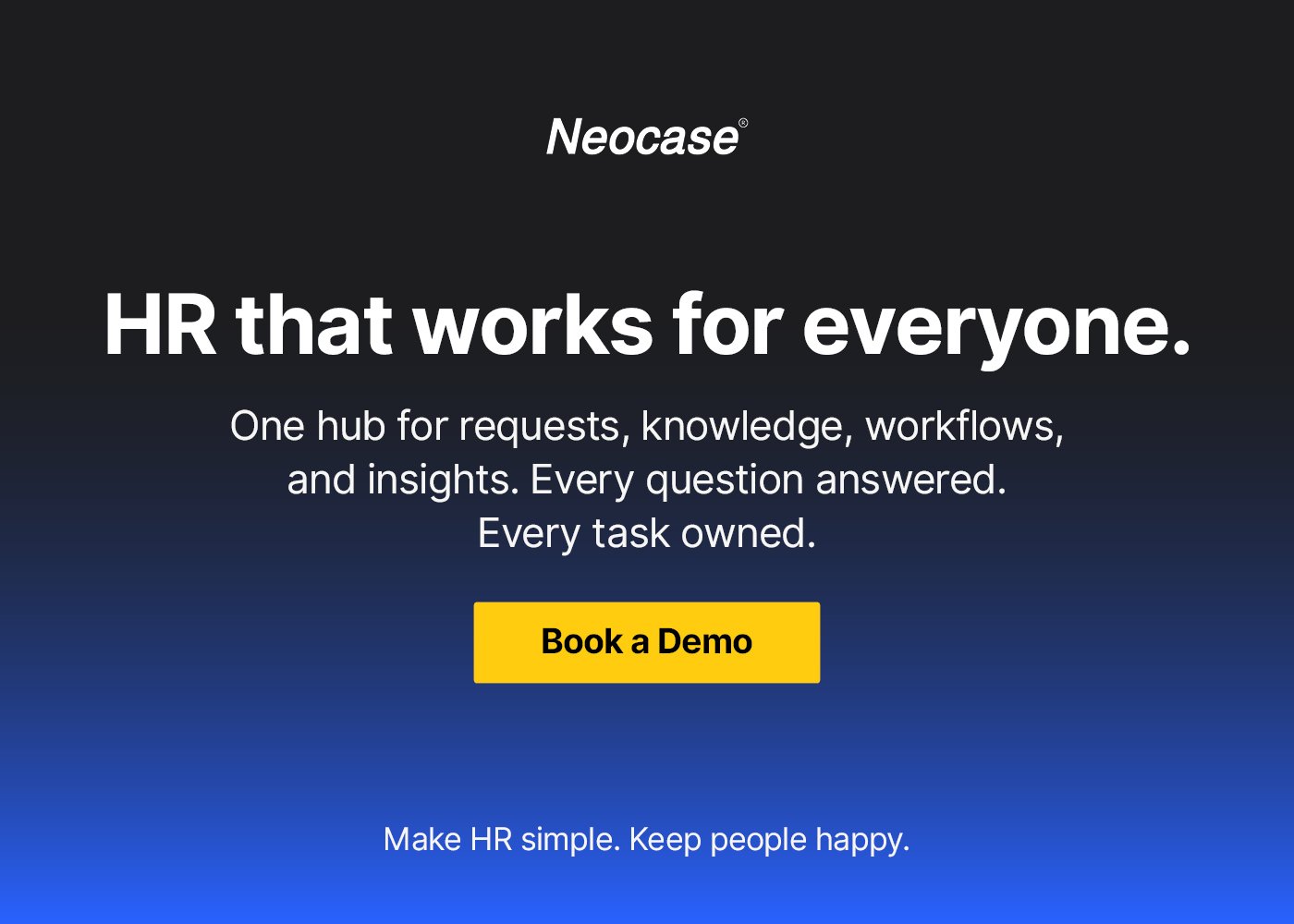Service-level agreements (SLAs) are a valuable tool for HR departments. They can help set clear expectations, enhance accountability, and improve the quality of service employees receive.
Learn more about how to use SLAs in your organization.
What Are HR SLAs?
An SLA is an agreement between two parties, typically a service provider and a client. In the context of human resources (HR), the HR department acts as a service provider and the employee assumes the role of client.
Though this relationship is a bit different than a traditional service provider-client relationship, in a sense employees are consumers of HR services. For this reason, HR SLAs provide a helpful means of fostering a positive relationship and ensuring HR departments deliver consistently high quality service to their “clients.”
An SLA covers a three key aspects of service to set expectations and establish a standard of service:
Service Provided
The SLA should outline exactly what the service includes. For this reason, HR departments must have separate SLAs for various services they provide.
Service-Level Targets
SLAs should also specify the standard for service. This may look a bit different depending on the service provided. Time to completion is typically an area of focus. For example, the SLA may include a commitment to provide answers to help desk inquiries within 24 hours during the work week or to fulfill requests from hiring managers to draft offer letters within two business days of the request.
Responsibilities of Each Party
The SLA should also spell out the responsibilities of the service provider (in this case, the HR department) as well as the customer (employees and managers). Continuing with the example above, hiring managers may be expected to review the offer letter draft and provide their approval promptly before HR sends the letter to the job candidate.
Why Are SLAs Important in HR?
SLAs serve a few crucial roles for both HR departments and employees. They generally accomplish the following:
- Set expectations and responsibilities: You can ensure both HR personnel and employees are on the same page so you can avoid misunderstandings or missed expectations.
- Enhance accountability and transparency: HR departments could have their own goals for service that they don’t disclose to employees. While this is a helpful starting point, an SLA can increase accountability by removing any obscurity. This also helps employees better understand what they should expect from HR.
- Improve the quality of HR service delivery: Overall, by setting and adhering to clear standards of service, HR departments can improve the quality of service employees receive. Employees will greatly appreciate having their needs addressed in a timely manner.
- Upgrade the employee experience: As HR service delivery improves, employee satisfaction will naturally improve, as well. From onboarding to their last day on the job, employees will feel confident that HR is handling their needs systematically rather than haphazardly and will benefit from efficient and effective HR services.
How to Use HR SLAs
HR departments can implement SLAs for any service they provide. Let’s look at three areas where SLAs can help HR departments deliver consistently excellent service.
1. Talent Acquisition
Many responsibilities HR personnel carry out are focused on helping organizations acquire the talent they need to succeed. According to HR expert John Sullivan, SLAs are one of the most effective ways of enhancing recruiting results and consistency, as well as strengthening the relationship between recruiters and hiring managers.
From posting job ads all the way to managing onboarding, SLAs can set expectations for every step of the recruitment and hiring process.
2. Employee Inquiries and Requests
Another critical area where HR SLAs can be immensely helpful is in addressing employee inquiries and requests. Because many questions or needs can be quickly resolved through a self-service portal and a knowledge base, consider starting there. Establish a standard of service for ensuring these resources help employees submit inquiries and, better yet, resolve needs on their own as much as possible.
Additionally, HR departments should set standards of service for responding to employee communications. The SLA should specify how soon employees should expect a response depending on factors such as the channel of communication (for example, a walk-in to the office may be handled with more urgency than an email) and the nature of their request.
3. Resolving Problems
In some cases, employees’ needs go beyond a simple question or request. If they experience a problem—such as a payroll error, a workplace injury, a dispute with a manager, or an inappropriate interaction with a coworker—they may need more immediate help from HR.
SLAs can establish the best ways for employees to involve HR in these issues and specify the steps HR will take to resolve them.
Use the Right Digital Solution for Effective SLA Management
Spending on HR technology was up by 57 percent in 2021 compared to the year before, and organizations are continuing to invest in software solutions to enhance HR processes. Many organizations are adopting new HR analytics tools and HR service delivery applications. These solutions can ensure HR departments take a more systematic approach to HR service delivery.
The right software solutions can help you meet your SLAs and evaluate your performance using HR service delivery metrics. A valuable place to start is the HR case management solution from Neocase. This platform empowers HR departments to efficiently handle cases of all kinds and consistently deliver a high level of service.
Learn more about our Case & Knowledge Management module and how it can help with successful SLA management!

 Microsoft Teams
Microsoft Teams
 Workday
Workday

